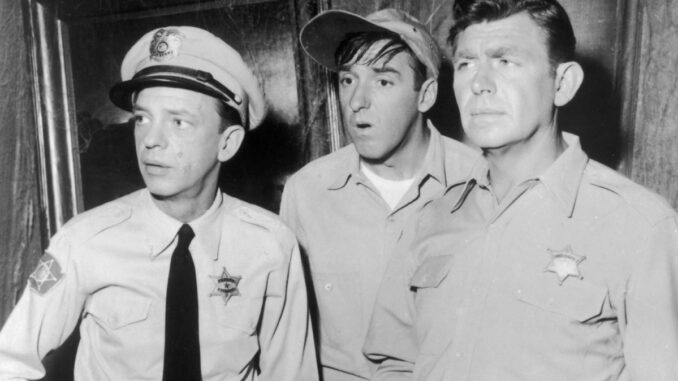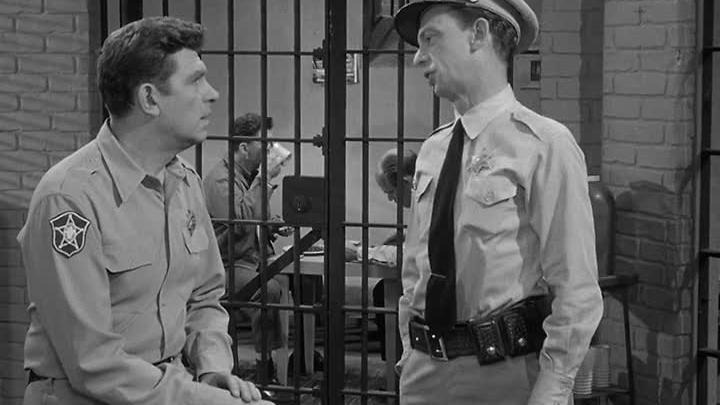
Introduction: When Change Comes to Mayberry
Let’s face it—most long-running shows suffer a major identity crisis when a fan-favorite character exits. But not The Andy Griffith Show. This beloved sitcom, set in the sleepy town of Mayberry, had already etched itself into the hearts of millions. Still, losing a core character could have easily derailed it.
Yet, the writers didn’t panic—they pivoted. They used that departure as a springboard to develop a background character into a central part of the show. That clever move not only kept the series afloat—it helped it thrive.
Let’s dive into how The Andy Griffith Show brilliantly navigated the departure of a beloved star and turned a side-character into television gold.
The Fan-Favorite Exit That Rocked Mayberry
Why Don Knotts’ Departure Was a Big Deal
Don Knotts, who played the jittery but lovable Deputy Barney Fife, left the show after five seasons. Barney wasn’t just comic relief—he was the comic lifeline of the show. His chemistry with Andy Taylor (played by Andy Griffith) created a buddy-cop dynamic that was both hilarious and heartfelt.
So, when Knotts left to pursue a movie career, fans were understandably shocked. And the show’s creators were faced with a tough question: How do you replace someone irreplaceable?
From Supporting Role to Center Stage
The Rise of Howard Sprague
Enter Howard Sprague, the meek and mild-mannered county clerk. Played by Jack Dodson, Howard had appeared on the show in a limited capacity before. But after Knotts’ exit, producers started expanding his role—slowly, then all at once.
They didn’t try to make him “the new Barney.” Instead, they leaned into Howard’s quirks—his stiff demeanor, awkward social skills, and bookish nature. He was the anti-Barney, and that contrast worked wonders.
Crafting a New Dynamic in Mayberry
Howard’s Character Traits: A Breath of Fresh Air
Unlike Barney, who was constantly trying to prove himself as a tough cop, Howard was just trying to get through the day without offending anyone. He didn’t carry a gun, bark orders, or dive into trouble headfirst. That difference created a refreshing new energy that subtly reshaped the show’s tone.
Howard became a canvas for quiet humor—a foil to Andy’s cool confidence and a target for Floyd’s barbershop ramblings.
Why the Pivot Worked So Well
No Forced Replacements—Just Smart Storytelling
One of the worst things a show can do is try to carbon-copy a beloved character. Thankfully, The Andy Griffith Show avoided that trap. They didn’t give Howard Barney’s lines or mannerisms—they gave him his own lane.
That decision preserved the integrity of the show’s world. It felt organic, not manufactured. And that’s why viewers bought into it.
Episode Highlights That Show Howard’s Evolution
“Howard the Comedian” – When He Tries Stand-Up
This episode gave Howard room to break out of his shell. His awkward attempts at humor and stage presence revealed more layers to his personality—and made him oddly endearing.
“Howard’s Main Event” – The Surprise Fight
In one memorable scene, Howard tries to impress a woman by learning how to box. The episode is packed with physical comedy, but it’s also where we start to see his inner drive. He’s not just a pushover—he wants to be more.
“Howard, the Bowler” – From Loser to Local Star
Howard unexpectedly becomes a local bowling champ. This arc shows his transformation from a paper-pushing clerk to a community figure. It’s a pivotal moment that makes viewers cheer for him.

The Bigger Picture: How Sitcoms Evolve
Pivoting Characters Is a Classic Sitcom Strategy
Shows like Cheers, The Office, and Friends have all faced major cast changes. The successful ones don’t replace characters—they reinvent dynamics. That’s exactly what The Andy Griffith Show did.
Other Characters Who Benefited From the Pivot
Floyd the Barber Got More Screen Time
Floyd, the whimsical and absent-minded barber, began to appear more often. His interactions with Howard were comedy gold. Floyd’s exaggerated stories and Howard’s straight-laced responses made for brilliant contrast.
Aunt Bee Became a Stronger Anchor
Without Barney around, Aunt Bee’s role deepened. She became more than a maternal figure—her storylines showed her as a strong, independent woman dealing with real-life issues.
Behind the Scenes: Why Jack Dodson Was Chosen
Andy Griffith’s Personal Choice
Andy Griffith personally selected Jack Dodson after seeing his work on Broadway. Griffith knew he didn’t need another slapstick comic—he needed subtlety. Dodson delivered just that.
Audience Reception to the Shift
Mixed At First, But Ultimately Warm
Some fans initially resisted the change. But as episodes went on, audiences grew fond of Howard’s idiosyncrasies. His quiet humor won people over, and his presence helped the show feel balanced after Barney’s exit.
Howard Sprague’s Legacy
A Quiet Hero in Mayberry Lore
While Howard never reached the fame of Barney Fife, he carved out his own legacy. Fans of the later seasons often point to Howard’s storylines as some of the most underrated in the series.
Lessons Modern Shows Can Learn
Don’t Replace—Reinvent
The biggest takeaway from this character pivot is simple: never force a replacement. Instead, take the opportunity to expand the world and explore new personalities. Viewers crave authenticity—and that’s what keeps them watching.
The Andy Griffith Show’s Real Genius? Adaptability
The show’s ability to shift gears without losing its charm is a lesson in long-term storytelling. It understood its audience, honored its roots, and wasn’t afraid to grow. And in that growth, it found new life.
Conclusion: A Character Pivot Done Right
When Don Knotts left The Andy Griffith Show, many thought it was the beginning of the end. But the writers and producers didn’t panic. Instead, they saw an opportunity to explore another side of Mayberry through a soft-spoken, unlikely character: Howard Sprague.
His rise wasn’t flashy—it was earnest. And in a world as heartwarming and humble as Mayberry, that’s exactly what was needed.
5 Unique FAQs About ‘The Andy Griffith Show’ and Its Character Pivot
1. Why did Don Knotts leave The Andy Griffith Show?
Don Knotts left after season five to pursue a film career. He believed the show would end after five seasons, so he signed a movie contract—and when the show continued, he couldn’t return as a regular.
2. Was Howard Sprague meant to replace Barney Fife?
No, Howard wasn’t a direct replacement. He was given a unique personality and storyline that complemented the remaining characters without mimicking Barney’s role.
3. How did fans react to Howard Sprague?
Initial reactions were mixed, but over time, many fans appreciated his awkward charm and dry humor. He became a beloved figure in his own right.
4. Did Don Knotts ever return to the show?
Yes! Don Knotts made several guest appearances after leaving the main cast, much to fans’ delight.
5. What made The Andy Griffith Show so resilient through cast changes?
The show’s strength was in its writing and world-building. Rather than relying solely on one character, it created a town full of engaging personalities that could step up when needed.
